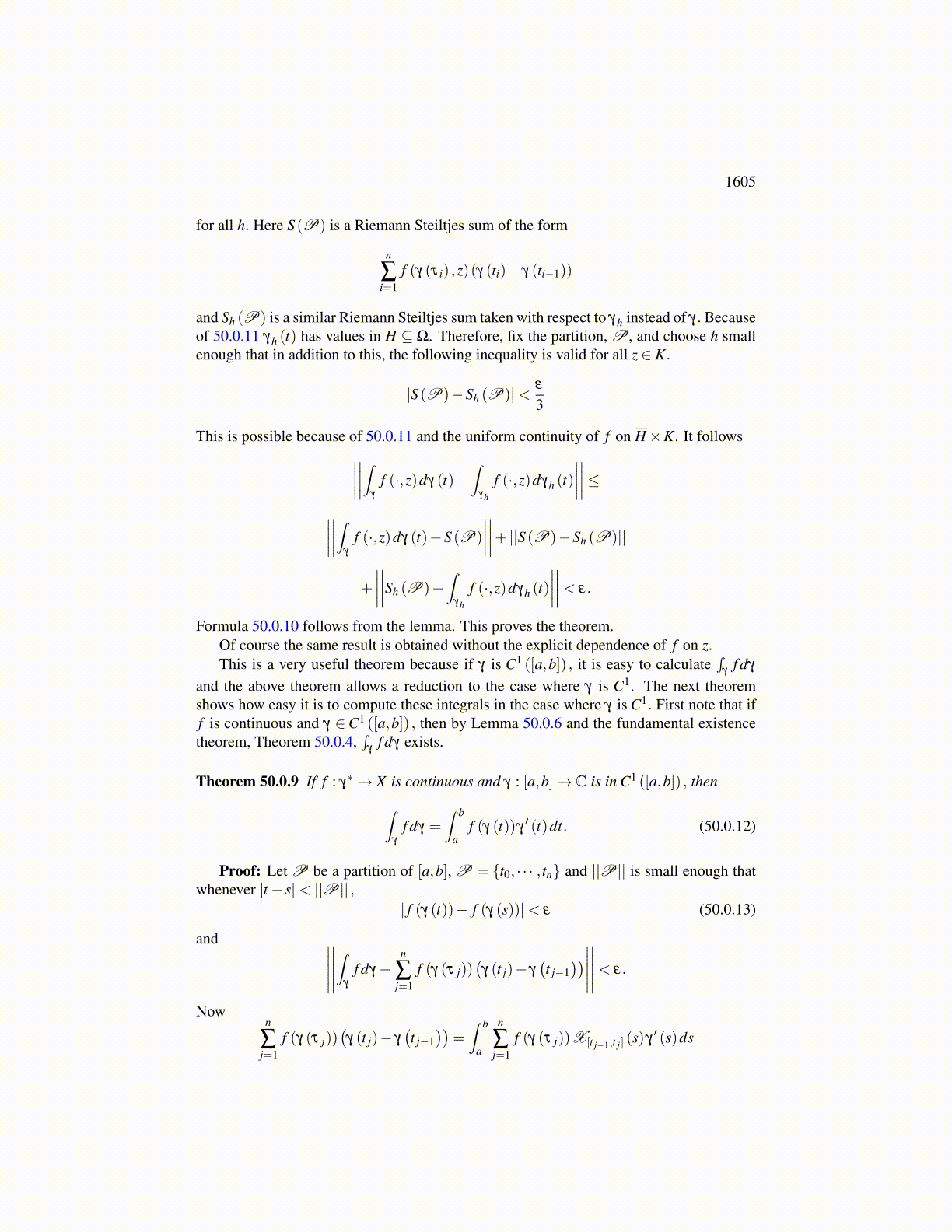
1605
Lemma 50.0.6 Let γ : [a,b]→C be in C1 ([a,b]) . Then V (γ, [a,b])< ∞ so γ is of boundedvariation.
Proof: This follows from the following
n
∑j=1
∣∣γ (t j)− γ(t j−1
)∣∣ =n
∑j=1
∣∣∣∣∫ t j
t j−1
γ′ (s)ds
∣∣∣∣≤
n
∑j=1
∫ t j
t j−1
∣∣γ ′ (s)∣∣ds
≤n
∑j=1
∫ t j
t j−1
∣∣∣∣γ ′∣∣∣∣∞
ds
=∣∣∣∣γ ′∣∣∣∣
∞(b−a) .
Therefore it follows V (γ, [a,b])≤ ||γ ′||∞(b−a) . Here ||γ||
∞= max{|γ (t)| : t ∈ [a,b]}.
Theorem 50.0.7 Let γ : [a,b]→ C be continuous and of bounded variation. Let Ω be anopen set containing γ∗ and let f : Ω×K→ X be continuous for K a compact set in C, andlet ε > 0 be given. Then there exists η : [a,b]→ C such that η (a) = γ (a) , γ (b) = η (b) ,η ∈C1 ([a,b]) , and
||γ−η ||< ε, (50.0.8)∣∣∣∣∫γ
f (·,z)dγ−∫
η
f (·,z)dη
∣∣∣∣< ε, (50.0.9)
V (η , [a,b])≤V (γ, [a,b]) , (50.0.10)
where ||γ−η || ≡max{|γ (t)−η (t)| : t ∈ [a,b]} .
Proof: Extend γ to be defined on allR according to γ (t)= γ (a) if t < a and γ (t)= γ (b)if t > b. Now define
γh (t)≡12h
∫ t+ 2h(b−a) (t−a)
−2h+t+ 2h(b−a) (t−a)
γ (s)ds.
where the integral is defined in the obvious way. That is,∫ b
aα (t)+ iβ (t)dt ≡
∫ b
aα (t)dt + i
∫ b
aβ (t)dt.
Therefore,
γh (b) =1
2h
∫ b+2h
bγ (s)ds = γ (b) ,
γh (a) =1
2h
∫ a
a−2hγ (s)ds = γ (a) .
Also, because of continuity of γ and the fundamental theorem of calculus,
γ′h (t) =
12h
{γ
(t +
2hb−a
(t−a))(
1+2h
b−a
)−